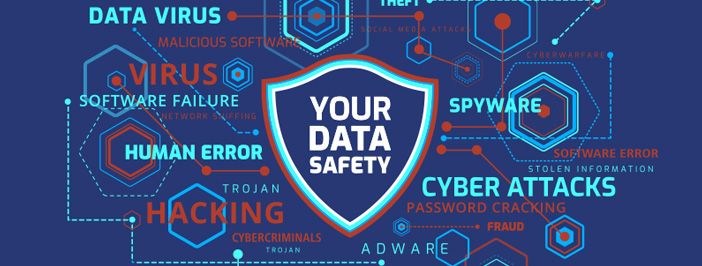When was the last time you took complete stock of your company’s cybersecurity efforts? Recently? Years ago? Never?
If it’s been a long time, don’t feel too bad. Many businesses neglect that kind of inventory. Maybe they installed antivirus software at some point, and they considered the matter resolved.
But cyberthreats are constantly changing. Resourceful, relentless hackers are always finding coding flaws and ways to fool people into clicking malicious links. They always have some new trick or scheme. Thus, the threat of data loss always looms.
The only real way to protect your data – and, by extension, your company and its reputation – is to get an accurate sense of your cybersecurity risk. Which parts of your digital infrastructure are vulnerable to hackers and malware? How can you strengthen those weak spots?
Every company has risk points. Here are a few steps to figure out what yours might be.
1. Create a working group
Why not assign an in-house IT pro or another employee who knows a lot about technology to lead this project?
You could ask a few other knowledgeable staff members to assist. And you could meet with this group regularly for as long as the assessment takes.
2. Inspect every device
Your cybersecurity team should examine every computer and mobile device that your employees use. Are they all protected by a strong firewall, two-factor authentication and the latest anti-malware software?
They could also uninstall every software program that’s no longer in use. Neglected programs may not get security updates, making them susceptible to hacks.
On top of that, they should make sure that all data is backed up in the cloud, on a second physical server, or both. And they should verify that all computers and mobile devices are locked up at night.
3. Interview everyone
You might interview, in a friendly but rigorous way, every employee individually. That way, you can stress the seriousness of cybersecurity and help your workers learn what they need to do to keep the company safe.
In these staff conversations, you can find out things like:
• How do you create strong passwords for yourself? How often are they changed?
• Do you avoid email links and download requests, even if you “know” the senders? (Email addresses can be spoofed, after all.)
• How would you recognize suspicious or unusual network activity or the signs of a hack?
• Do you properly dispose of old thumb drives and other devices that may contain sensitive material?
• How can you stay away from public Wi-Fi networks and avoid working remotely on other people’s devices?
4. Review the results
Once the investigation has wrapped up, it’s time for an executive meeting — or maybe a series of meetings. You and your company leaders can discuss the findings of the cybersecurity probe, identify problem areas and come up with a step-by-step plan for the future.
You don’t have to go it alone
Conducting your own cybersecurity inspection is a great way to find gaping holes. You can then address pressing issues right away.
However, to really uncover every little vulnerability, it’s important to get help from outside IT managed services pros. They bring a fresh perspective, years of training and experience, and a keen understanding of the latest digital dangers.
They can scrutinize every nook and cranny of your infrastructure. If somewhere there’s a faulty software patch, an easy-to-guess password or an unlocked server room door, those aces will find it and fix it. Your confidential data will stay confidential, and you’ll have a clear path to greater success and prosperity.






